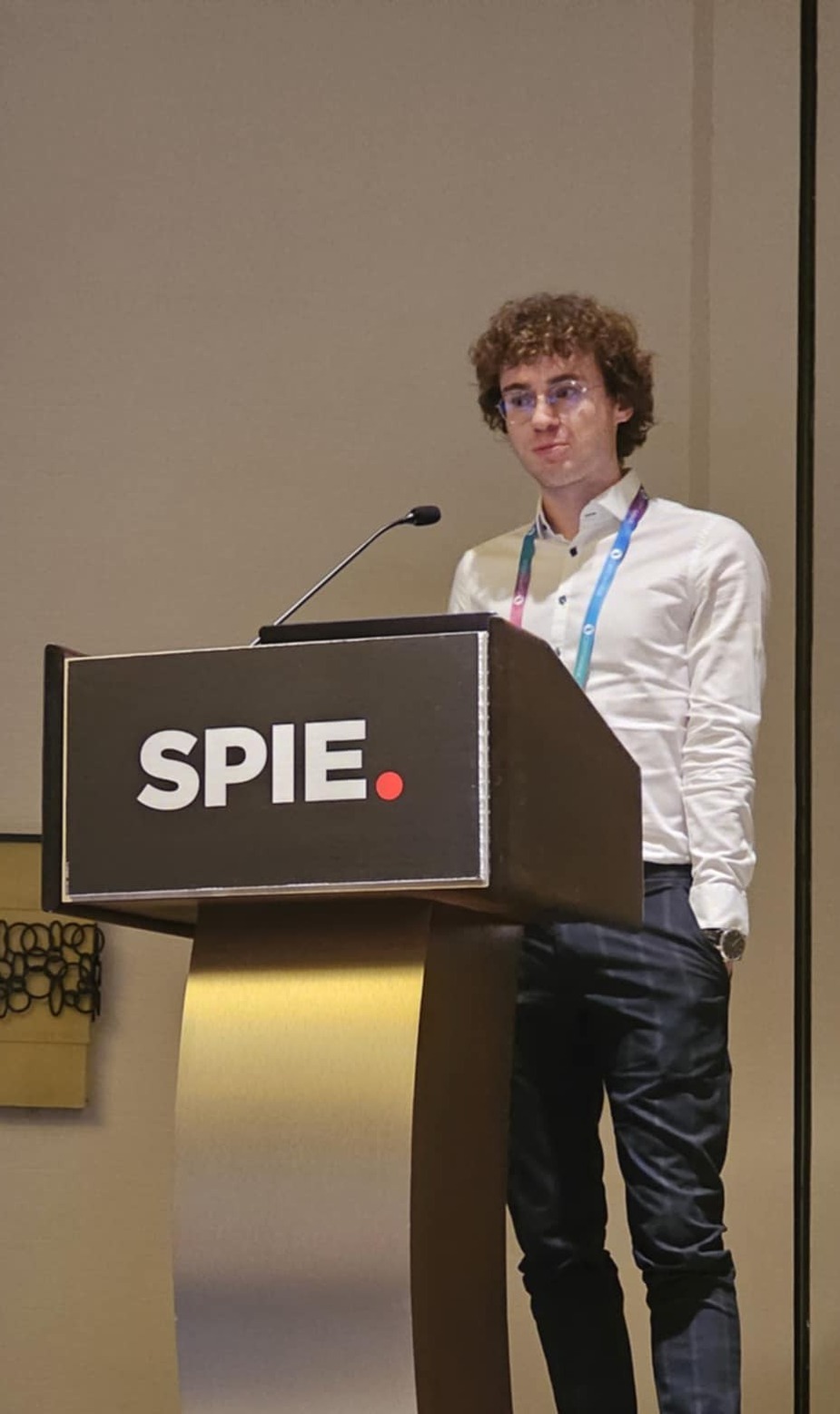 Laser Research Center doctoral student Erikas Atkočaitis received the SPIE Laser Damage MJ Soileau Best Student Paper Award last October at the SPIE Laser Damage 2024 conference in San Ramon, California (USA). His research, which centers on estimating the lifetime of dielectric coatings subjected to high-power laser exposure, drew significant attention for its methodical approach and potential to enhance the performance of optics in advanced laser systems.
Laser Research Center doctoral student Erikas Atkočaitis received the SPIE Laser Damage MJ Soileau Best Student Paper Award last October at the SPIE Laser Damage 2024 conference in San Ramon, California (USA). His research, which centers on estimating the lifetime of dielectric coatings subjected to high-power laser exposure, drew significant attention for its methodical approach and potential to enhance the performance of optics in advanced laser systems.
The SPIE Laser Damage conference is a prominent annual gathering of researchers, engineers, and industry representatives committed to expanding our understanding of laser-induced damage, refining optical materials, and advancing high-power laser technologies. Attendees share the latest discoveries, trade insights, and assess emerging applications in this rapidly evolving field. Each year, three main distinctions are conferred in recognition of scientific rigor and clear presentation: The Alexander Glass Best Oral Presentation Award, The Arthur Guenther Best Poster Award, and The MJ Soileau Best Student Paper Award. Recipients are meticulously chosen by conference co-chairs for the significance of their findings, technical innovation, and effective communication.
In the award-winning presentation, titled “Investigating the Lifetime of Dielectric Coatings: The Role of Absorption,” Atkočaitis explored the durability of monolayer dielectric coatings—HfO₂ and SiO₂—on fused silica substrates. A core premise of his work is the notion that each material has a fixed cumulative absorbed dose rate at which laser-induced damage inevitably occurs. This threshold is identified by integrating linear and non-linear absorption measurements performed via Photothermal Common-path Interferometry (PCI) with Laser-induced Damage Threshold (LIDT) tests. By combining these two techniques, his research highlights how parameters—such as the material’s band gap, absorption coefficients, coating thickness, and laser wavelength—help predict the operational lifetime of optics in demanding laser applications.
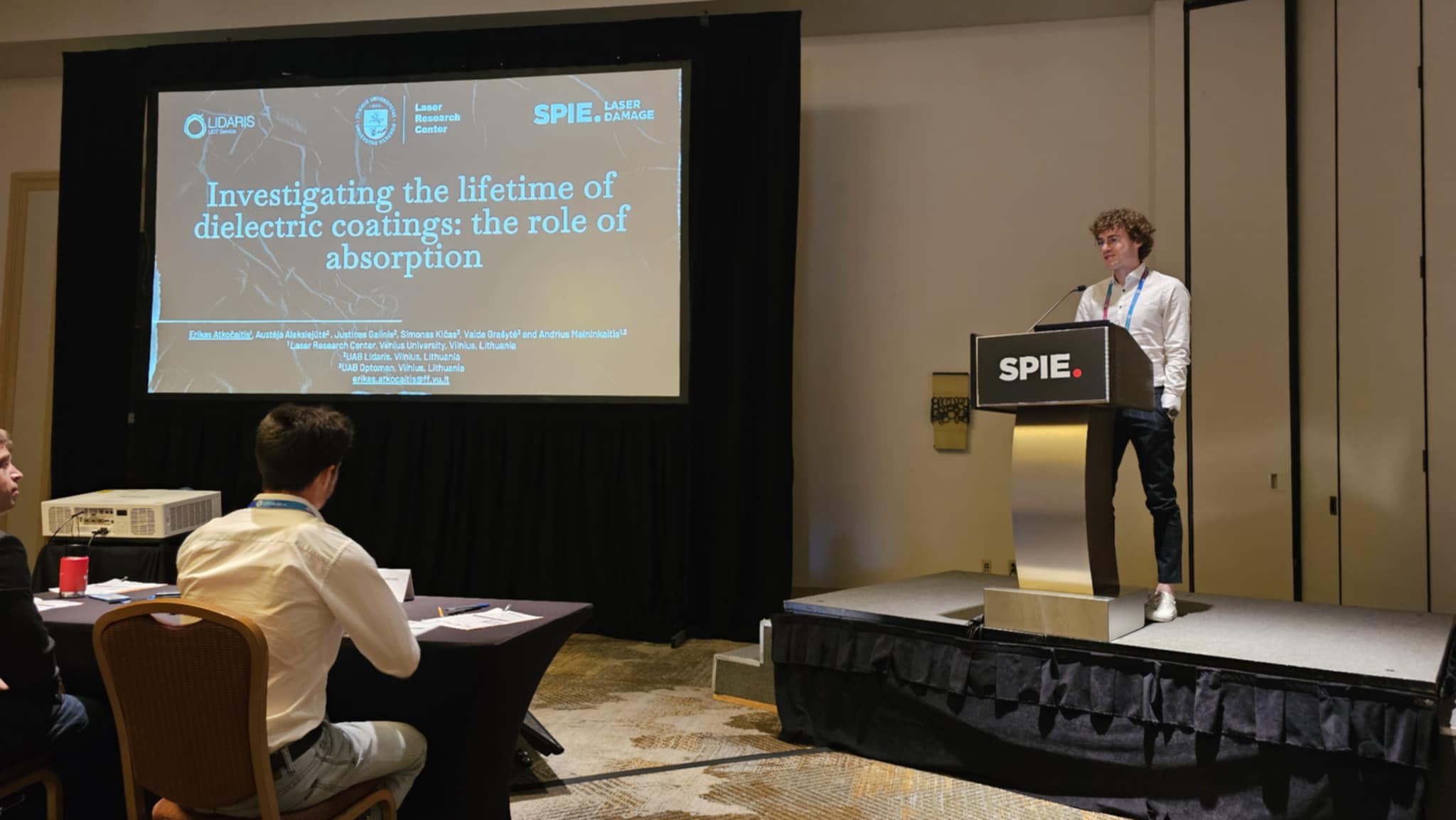

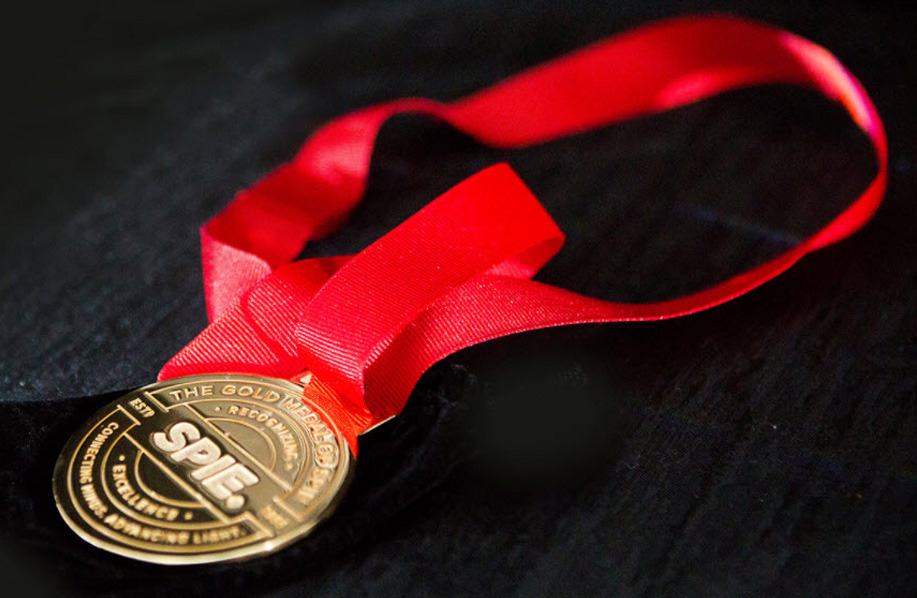
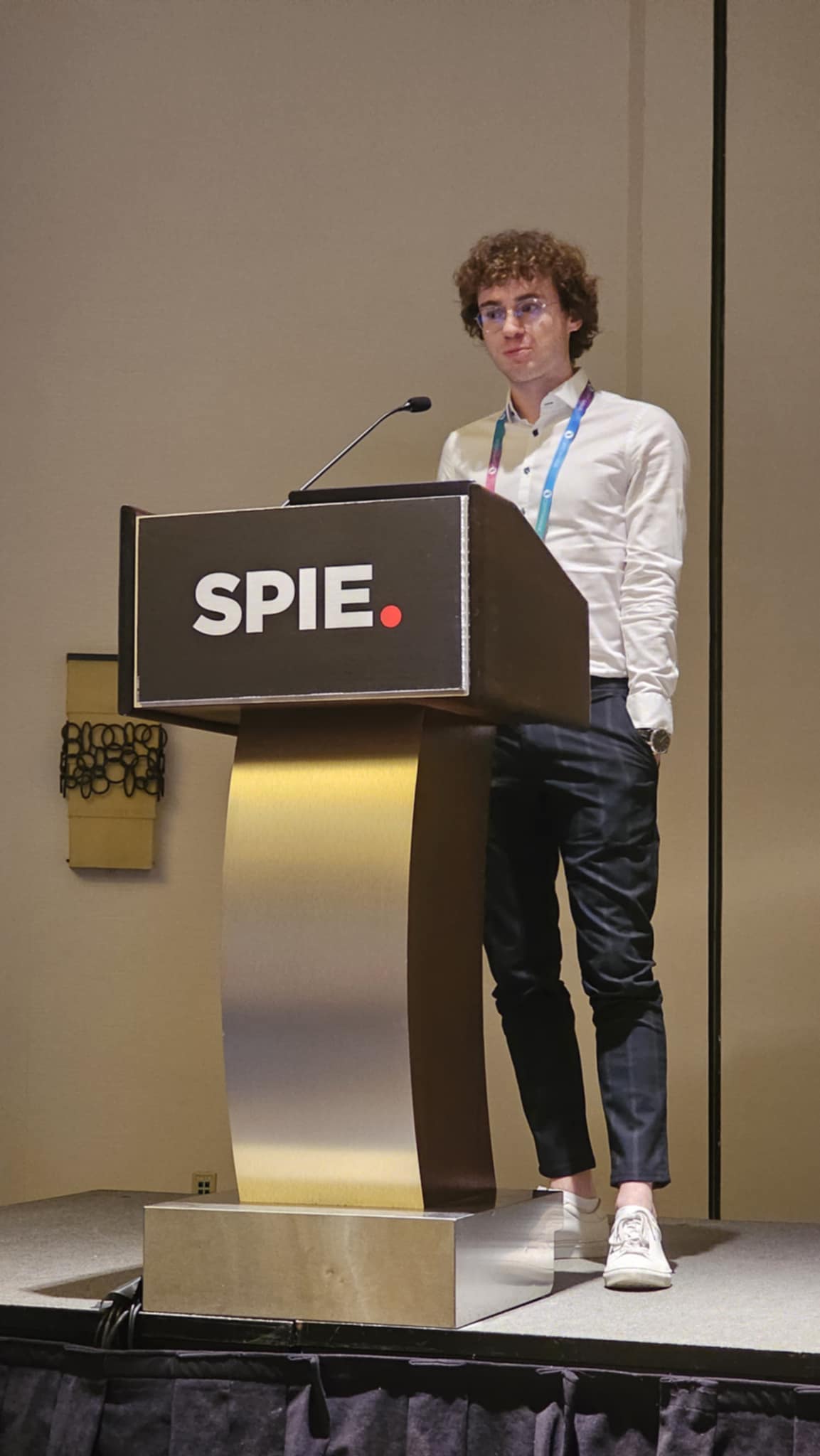
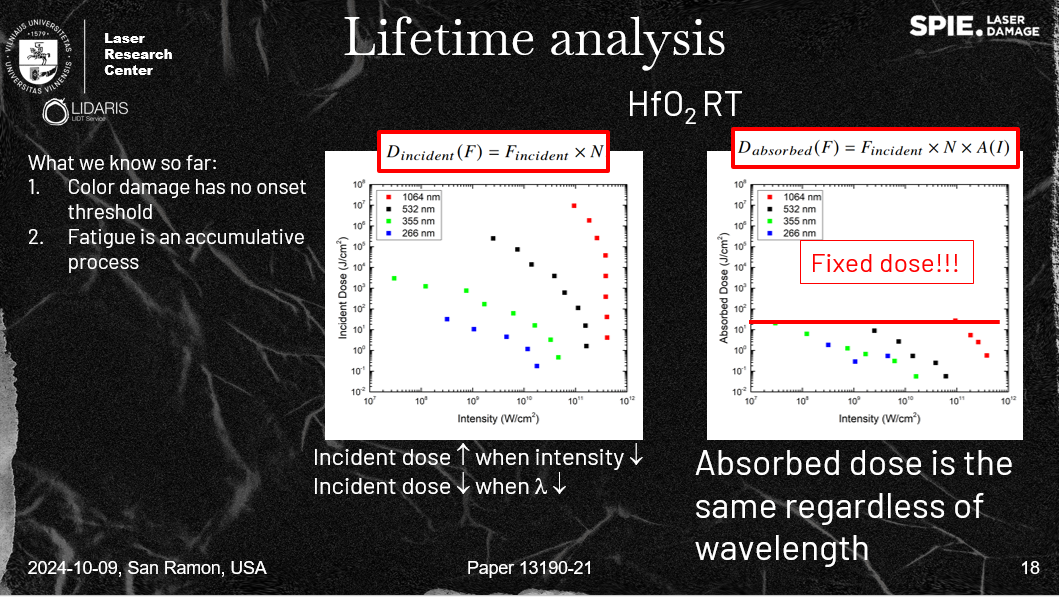
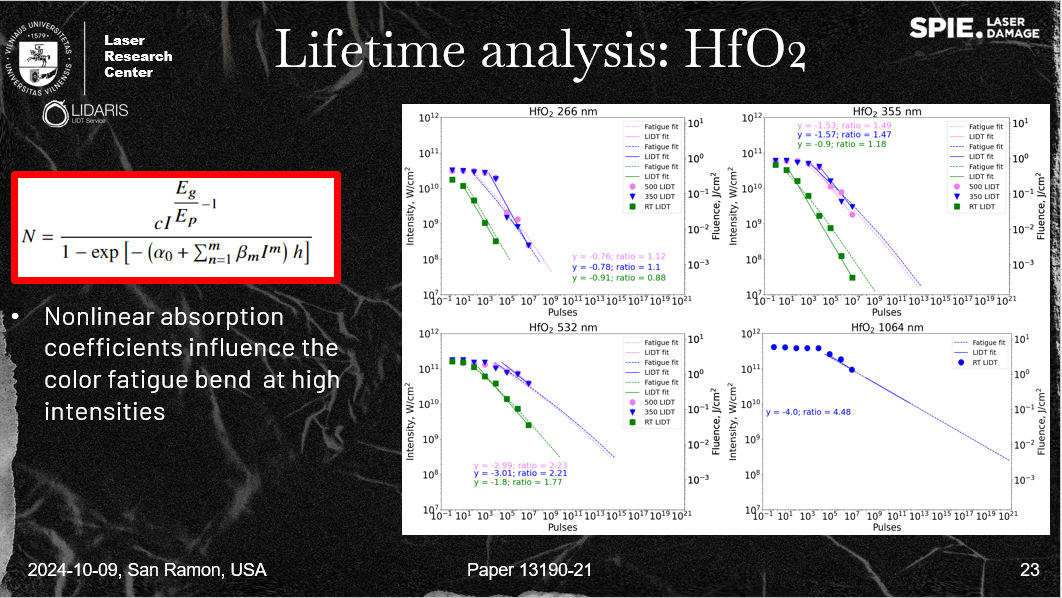
Atkočaitis’s findings carry broad implications for both academic and industrial settings, particularly for developing resilient, cost-effective optical components in high-repetition-rate or ultrafast laser systems. By shedding light on the role of absorption mechanisms in long-term coating stability, his work offers a practical guide for industries spanning material processing, medical diagnostics, and beyond.
This achievement builds on the longstanding tradition of optical research at Vilnius University’s Laser Research Center, showcasing a continued commitment to advancing photonics. As further studies explore new ways to bolster optical durability and system reliability, contributions like Atkočaitis’s could shape the design of next-generation high-power laser technologies in diverse sectors.
For more information about the SPIE Laser Damage awards and their recipients, visit the official SPIE Laser Damage awards page: https://spie.org/conferences-and-exhibitions/laser-damage/program/awards.
